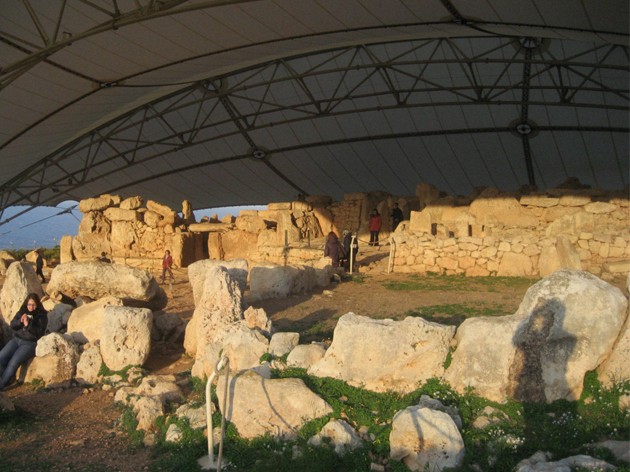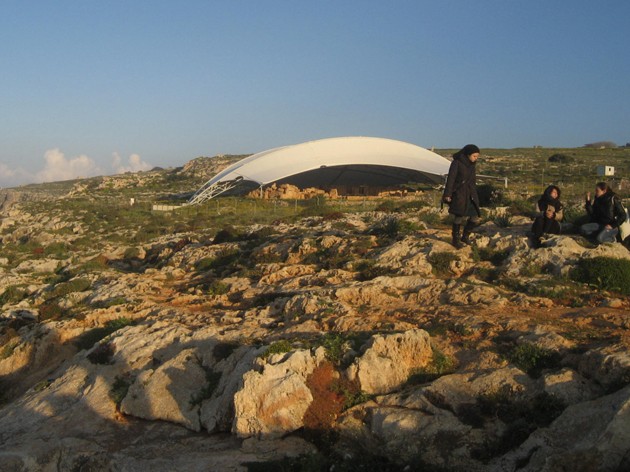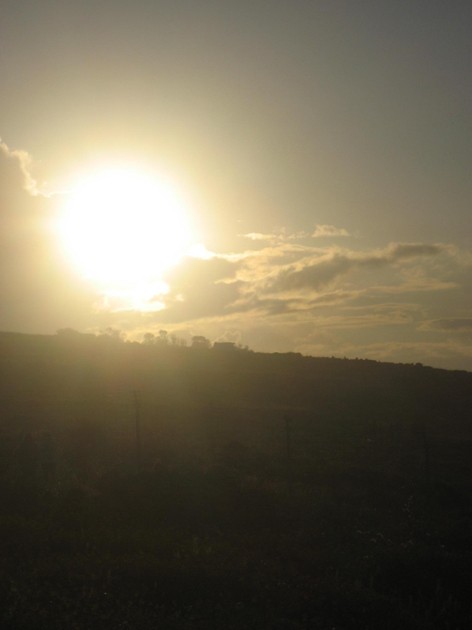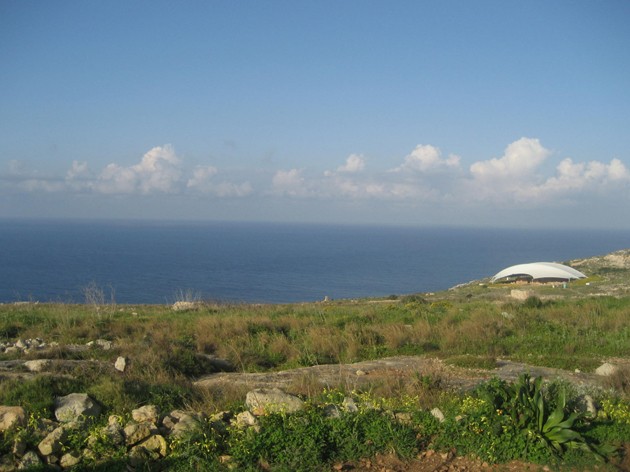 Ashley Davis writes: The culture that built the temples of Malta disappeared over four millennia ago, around the time the ancient Egyptians began building pyramids in Giza. The Maltese builders had been at it for two thousand years longer, assembling walls from limestone megaliths. All we know of these ancient builders are the ruins that still dot the Maltese archipelago today.
Ashley Davis writes: The culture that built the temples of Malta disappeared over four millennia ago, around the time the ancient Egyptians began building pyramids in Giza. The Maltese builders had been at it for two thousand years longer, assembling walls from limestone megaliths. All we know of these ancient builders are the ruins that still dot the Maltese archipelago today.
The oldest of the temples is called Ġgantija, the Giant’s Tower. Built on a hill in Gozo (the smaller of Malta’s two inhabited islands), it is the oldest free-standing structure built by human hands, or so archaeologists believe.

The temples are aligned with the heavens to face the morning sun. Their entrances open into kidney-shaped rooms of varying complexity. Their softer stones are decorated with spiralling reliefs and animal figures that communicate a forgotten way of looking at the world. They were once roofed with vaulted limestone boulders now replaced by modern scaffolding and the open sky.
Architecture like this is found nowhere else in the Mediterranean.

UNESCO has designated the Maltese temples as world heritage sites, enclosing their legacy for posterity in science and good intentions. Many of my older Maltese friends remember that the stones once served different purposes: tables for family picnics and adolescent parties, or altars for clandestine groups practising the dark arts under moonlight.
Mnajdra temple sits high on the cliffs overlooking the Mediterranean Sea on the south coast of the main Maltese island. On spring and autumn equinoxes, the morning sun pierces the temple’s ancient doorway, splitting the kidney-shaped rooms with perfect symmetry. Shortly before daybreak in the middle of spring, I stood in Mnajdra with about twenty other tourists to witness the sunrise for myself.

We met our guide at 5.00am in the visitor’s centre, about half a mile inland from the temple. He led us through the inky darkness down the path to Mnajdra, passing the sister temple of Ħaġar Qim along our way. Last year, Maltese conservators built tent-like roofs over both Mnajdra and Ħaġar Qim. Like giant white sails, the roofs are masterpieces of modern science and engineering, but in a typical February storm withstood by the temples for six millennia, the new roof over Ħaġar Qim yielded to the buffeting winds and tore asunder. Ħaġar Qim was then closed for over a month.
Standing by Mnajdra’s door, the guide began his lecture. He said that the temple walls probably separated the sacred from the profane. As the ancient culture developed greater complexity over thousands of years, so the temples gained more walls, more apses, more doors and windows. Architectural complexity might also signal the vicissitudes of wealth and power, he added.

As the sky grew lighter and an orange glow spread across the horizon, the lecture came to an end. One visitor, fascinated by the alignment of the womb-like Mnajdra with the cycle of the sun, offered an alternative interpretation. Perhaps the temples represent the consummation of the eternal union between heaven and earth, a kind of twice-yearly cosmic intercourse.
“Perhaps,” responded our guide dryly, “but there is no evidence of an ancient fertility cult.”
At that moment, our thoughts were disturbed by a quiet humming, like the sound of high-voltage power lines. We turned to see that a group of about twenty people had gathered on the cliffs on the other side of the barbed-wire boundary fence. Standing at arm lengths from each other, they were chanting mournfully into the wind.

The temple walls may have once housed the sacred, but the pagan pilgrims who had come to worship on this morning were kept outside by a different wall made up of twisted wire and the person who had collected our tickets.
I remembered what the philosopher Michel de Certeau had said about our little acts of resistance against cultural orthodoxies that would otherwise dominate the way we interpret our experiences. Might ironic jokes about failed modern roofing technology, whispered stories of ancient fertility cults, and the drift of pagan songs over barbed-wire fences and an archaeology lecture be examples of our attempts to capture Mnajdra for ourselves?

I think so, but there was also poetry in the way that the ancient rocks resembled our modern forms of domination and resistance. They brought to mind the human penchant for building walls around things.
Witnessing the sunrise at Mnajdra temple and thinking about walls was like standing beside the work of the most ancient of human hands and finding that not all things change.
Ashley Davis is a recent university graduate and completed an internship in Malta.







Crikey is committed to hosting lively discussions. Help us keep the conversation useful, interesting and welcoming. We aim to publish comments quickly in the interest of promoting robust conversation, but we’re a small team and we deploy filters to protect against legal risk. Occasionally your comment may be held up while we review, but we’re working as fast as we can to keep the conversation rolling.
The Crikey comment section is members-only content. Please subscribe to leave a comment.
The Crikey comment section is members-only content. Please login to leave a comment.